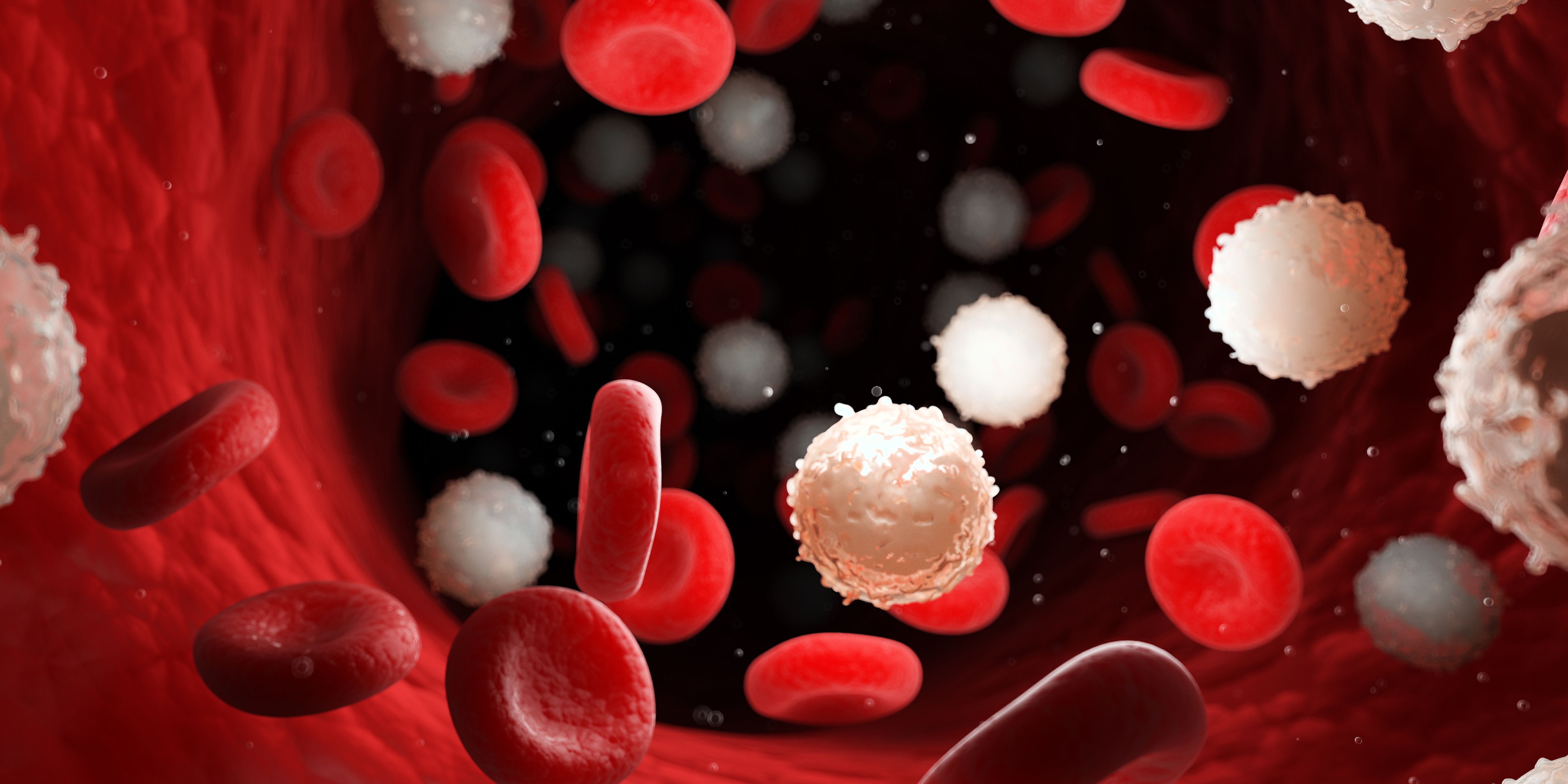Publication
Article
Pharmacy Practice in Focus: Oncology
Patients With CLL Present Heterogeneously
Author(s):
Certain patients may present asymptomatically, affecting treatment options.
Most patients with chronic lymphocytic leukemia (CLL) are not dying from CLL; they’re dying because the median age at diagnosis in the United States is 75 years, Anthony Perissinotti, PharmD, BCOP, clinical pharmacist specialist of hematology and clinical team leader of hematology/oncology pharmacy at Michigan Medicine in Ann Arbor, explained during a Pharmacy Times Clinical Forum. Ten years following diagnosis, these patients are aged 85 years, which is the median age of mortality in the United States.
Image credit: SciePro | stock.adobe.com

“I think some of the most intriguing data that I’ve seen recently [are] from the SEER [Surveillance, Epidemiology, and End Results]–Medicare Health Outcomes Survey Linked Database, and [they] essentially showed that nowadays with novel therapies, patients [with CLL] can live the identical life span as the general population,” Perissinotti said. “Now, that is remarkable because if you take a time machine and you go back to the 1970s, these numbers wouldn’t look like these 5-year survival rates. In the 1970s, you were lucky to have 50% or 60% of your patients alive at 5 years. Now virtually all of them are alive.”
In 2022, there were about 18,740 new cases of CLL and 4490 deaths from CLL. To assess prognostics for patients with CLL, a National Comprehensive Cancer Network prognostic nomogram and a prognostic index were developed using age, β2 microglobulin, absolute lymphocyte count, sex, Rai stage, and number of involved lymph nodes to stratify patients with untreated CLL into low-, ntermediate-, and high-risk groups. The 5-year survival rates for these groups were 97% for low-risk, 80% for intermediate-risk, and 55% for high-risk groups; the 10-year survival rates were 80%, 52%, and 26%, respectively.1
However, Perissinotti noted that many oncology pharmacists work at specialized centers and see patients with CLL who would fall into the high-risk category rather than low or intermediate risk.
“We see some of the highest-risk patients,” Perissinotti said. “But globally, across communities, our patients [with CLL] do very, very well with our new novel therapies.”
Perissinotti also noted that patients with CLL can present very heterogeneously. He gave the example of a patient who presented with a high white blood cell count but without symptoms.
“[We did a] flow cytometry, and [we] notice that it’s a lymphocytosis, so they do a bunch of other tests,” Perissinotti said. “Sure enough, that patient has CLL and you had no idea that they have CLL because they have no symptoms. I think an important point about that particular patient is we never treat those patients because we don’t want to give them any therapy that’s going to make them feel worse. Every possible therapy [for this disease] is going to make a patient feel worse when they don’t feel bad to begin with. You can’t make an asymptomatic patient feel better. It’s impossible.”
Additionally, for patients who present asymptomatically, the approach will likely be to watch and wait before commencing any therapy, and this lack of immediate treatment or activity to address the disease can contribute to patients’ anxiety relating to their disease. However, not all patients present asymptomatically, according to Perissinotti.
“There are some patients who present with symptoms, [such as] lots of fatigue, drenching night sweats, and significant weight loss,” Perissinotti said. “Then certainly we have patients [who] can present immunosuppressed because of their CLL.”
Another challenge for oncology pharmacists can occur during the discussion with patients around the difference between the strong survival outcomes present with CLL based on current treatment options vs curing the disease. According to the panelists, a lot of patients when they’re first diagnosed with CLL are told that they will be living with a chronic disease that cannot be cured, which can cause significant anxiety.
Jasmine Patel, PharmD, BCOP, PGY2 oncology director at Boston Medical Center in Massachusetts, explained that she addresses these understandable concerns by discussing the history of the treatment of CLL and how much the landscape for the treatment of CLL has advanced over the years.
“I like referring to the fact that, before, the survival rates were [lower] and now we have these therapies which provide all these other options,” Patel said. “I think by showing them that growth and our understanding of how the landscape has changed, they develop more trust in us as their providers and they’re more willing to understand what we’re saying.… But I think leveling with them and helping them understand the history can help ease their concerns or fears.”
The panelists discussed the potential for patients to experience significant periods of remission. For this reason, even if patients may not be cured, they can experience years or even decades without symptoms.
Perissinotti explained that at his practice at Michigan Medicine, 1 pharmacist may be working with 100 to 200 patients at a time, which can make face-to-face time with each patient a challenge.
“You can’t be in the room with every single one of those patients,” Perissinotti said. “So you have to prioritize, and prioritization comes down to, who am I actually treating?”
However, not all practices operate in this fashion. One panelist noted that before a therapy is selected, the pharmacist will meet with the provider or the patient about the therapy options available. Based on these discussions, the pharmacist will help assess the best approach to treatment based on the patient’s comorbidities, drug interactions, and insurance.
According to Emily Tiao, PharmD, BCOP, clinical pharmacy specialist, leukemia, at Dana-Farber Cancer Institute in Boston, Massachusetts, in her prior role at Seattle Cancer Care Alliance in Washington, the cancer team would rely heavily on the pharmacist to relay information about patients, such as comorbidities, drug interactions, and insurance, and then communicate with other team members regarding the best approach for treatment for the patients.
“We were sort of like that lead liaison between the headquartered facility and the main campus facility [in downtown Seattle] to the regional site,” Tiao said. “Pharmacists were definitely [involved] prior to the treatment decision.”
With patient details, such as comorbidities and co-pay issues, physicians also may not always understand the amount of work pharmacists have to put in to address some of these challenges for the patient, explained Perissinotti. According to the panelists, it can feel as if the physician expects to be able to wave a wand and the pharmacist will have the answer to the problem at hand. However, extensive work can go into addressing some of the “extra stuff” present for the patient, according to Perissinotti.
“The physician knows the options but they don’t always process [that] this patient has this comorbidity, or this patient is going to have this co-pay issue, or this patient can’t get to and from X, Y, and Z,” Perissinotti said. “I feel like as pharmacists, we’re the ones that are always thinking about all the extra stuff.”
Reference
1. NCCN. Clinical Practice Guidelines in Oncology. Chronic lymphocytic leukemia/small lymphocytic lymphoma, version 1.2024. Accessed January 10, 2024. https://www.nccn.org/professionals/physician_gls/pdf/
cll.pdf

Newsletter
Stay informed on drug updates, treatment guidelines, and pharmacy practice trends—subscribe to Pharmacy Times for weekly clinical insights.





